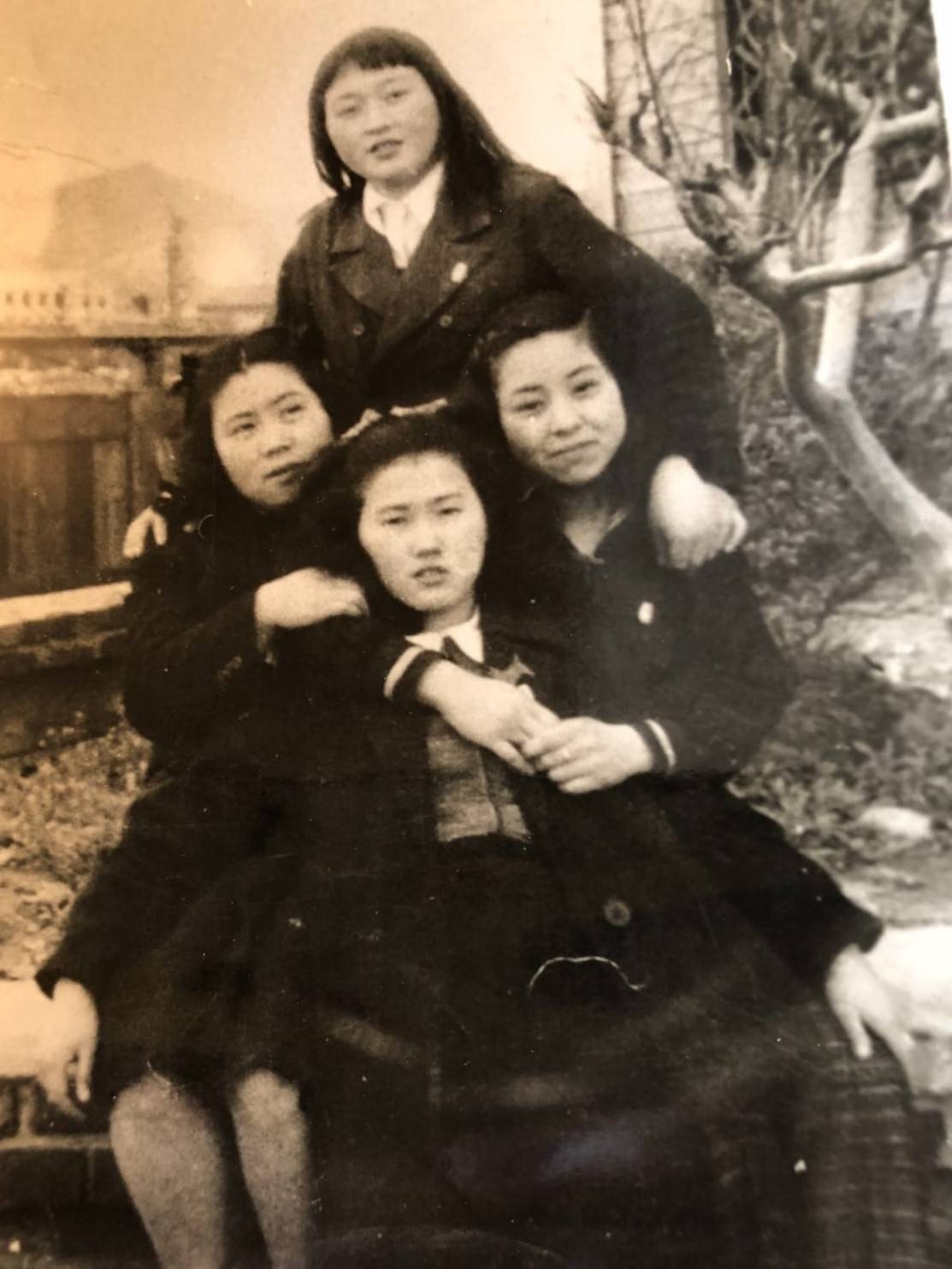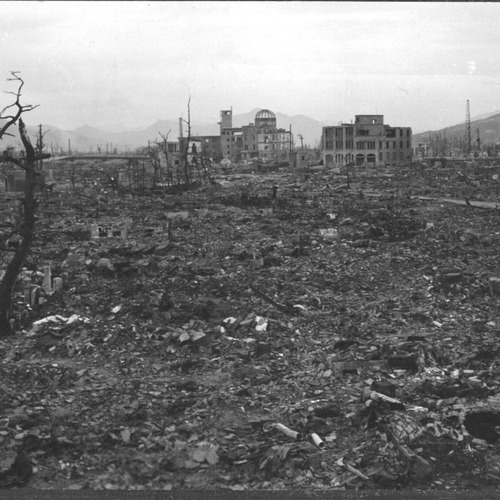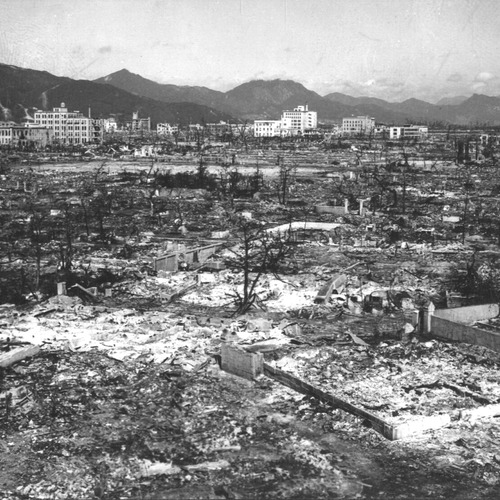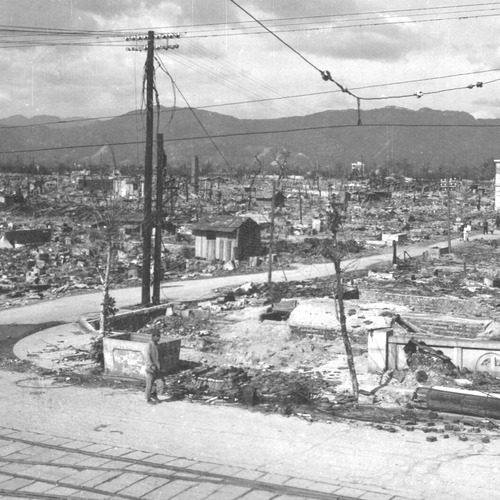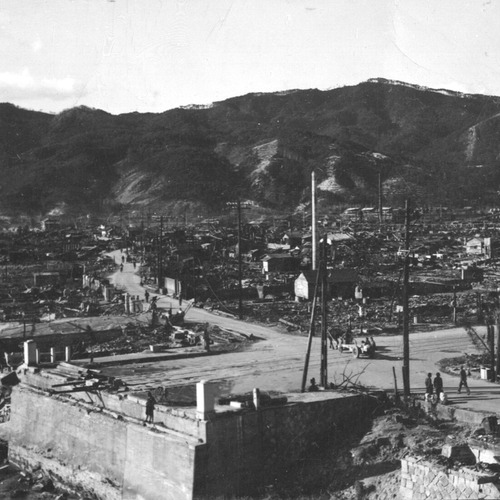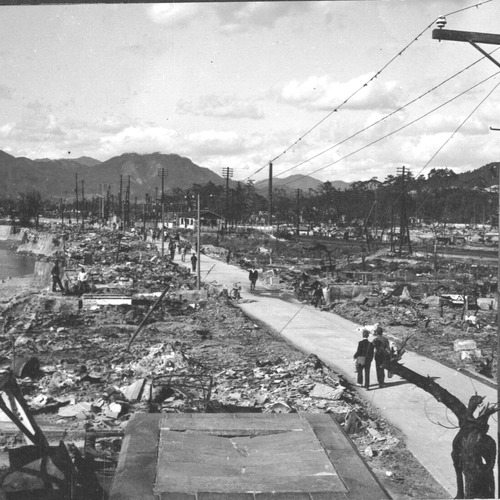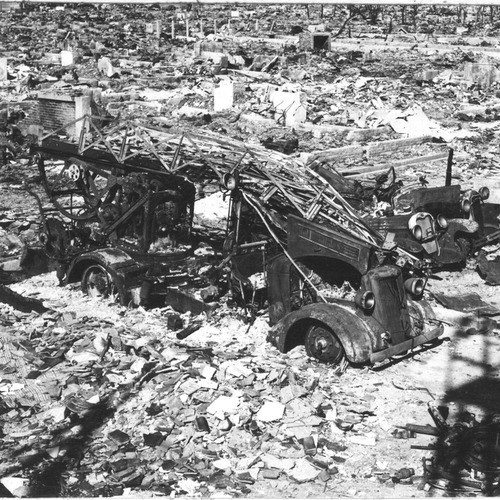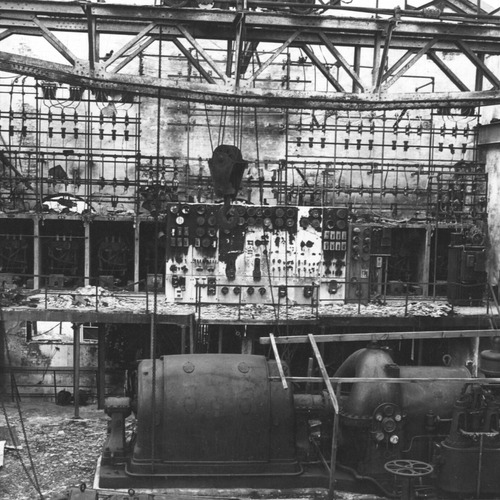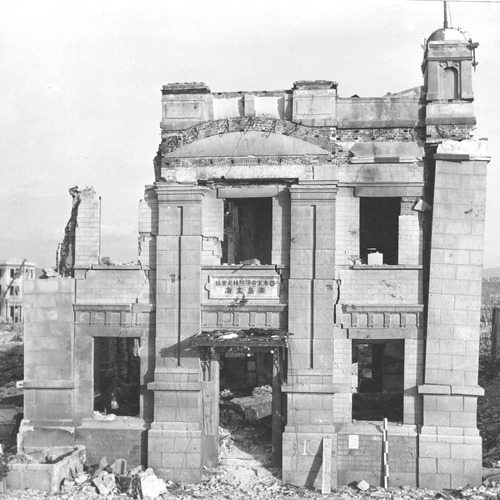The Experiences and Destruction of the Atomic Bombing
Home Page The Bombings of Hiroshima and Nagasaki
On December 8th, 1945, Japan attacked the United States naval base Pearl Harbor. Japan was becoming an increasingly dangerous threat to the United States. Soon after, the US released B29s on Hiroshima, but did not follow up any further. The behavior of the United States raised questions: Why was the US not attacking Hiroshima? Japan was incognizant of the atomic bombs being constructed by the United States in New Mexico. On August 6, 1945, an atomic bomb was dropped on Hiroshima, Japan. On August 9, 1945, an atomic bomb was dropped on Nagasaki, Japan. Buildings collapsed and caught on fire. Everything within a short radius of the bomb was burnt to a crisp. The flash of the bomb blinded all citizens of Hiroshima and Nagasaki. The city was destroyed. Medical care was needed, yet 90% of the cities doctors died or had severe injuries. President Truman declared the bomb dropped on Hiroshima as a nuclear bomb, suprising all of Japan. Dead bodies covered the cities, and the smell of burnt flesh permeated the air. Thousands of citizens waited to be treated, and those with severe burns were deemed untreatable due to the lack of medicine (Kosakai 1972).
New York Times paper stating the number of dead, wounded, and homeless Japanese citizens
Japanese Experiences of the Bombing
Futaba Kitayama
Futaba Kitayama, a thirty three year-old house wife, experienced the bomb 1.7 kilometers from its' center. Kitayama was working for her Neighborhood Association when a light filled her vision, blinding her. Her entire body was severely burnt. As she ran through the haze, she saw dead, severly injured, and dying people. Dying mothers watched their children burn to death. Corpses were everywhere. Injured and burnt children cried for their mothers. Kitayama begged for her life, praying she could be reunited with her children before her death. Kitayama was eventually reunited with her husband and children, but her husband of 16 years died a few days later. Although Kitayama survived, she was left with severe psychological damage, damaged vision, multiple apparent scars all over, and emotionally and physically hurt children (Kitayama 1972).
Hakuzo Iwamoto
Hakuzo Iwamoto, a fourty six year-old chauffeur, experienced the bomb 1 kilometer from the center. He saw a bright flash, and his work building began collapsing on him from all angles. His head was severly injured, and his body was covered in blood. He walked past dying, suffering people covered in blood. The city was destroyed and covered by fires. He walked past a dying 10 year-old boy, screaming in agony for help. As black rain fell and burnt his skin, he dove into the pond. The pond became covered in flames from a gust of wind and a cyclone formed. Everyone in the pond was burnt. He saw a member of his neighbor association, burnt to death. He touched his body and it immediately broke into pieces. He came across his wife, lying on the ground on the verge of death. He carried her as they searched for their son. He found his son eventually, burnt all over. Later that afternoon, his son passed away. He watched his son get cremated. His wife passed away shortly after (Iwamoto 1972).
Michiko Ogino
Michiko Ogino, a ten year-old girl, experienced the bomb 1.5 kilometers from the center. She saw a bright flash, and her house collapsed on her. She screamed for help. Her younger brother cried for help beneath the ruins of the house. Her two year-old sister screamed, pinned beneath a massive and broken beam. The house began to catch on fire. She saw her mother, severly burtnt, injured, naked, and covered in ash. They were able to save her younger sister. That night, her mother died (Ogino 1972).
